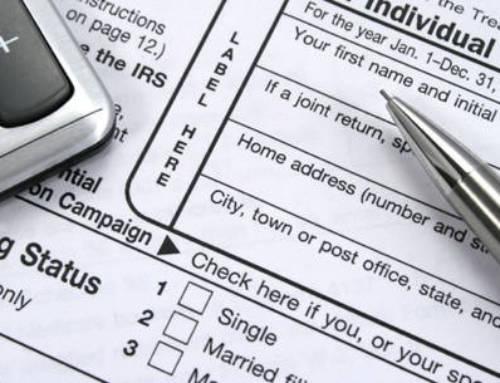Owning a business can mean a lot of paperwork. First, there is the marketing plan that can help guide your business from year to year. Then, there are a myriad of documents that can be daunting to create: marketing analysis, budgets, proposals, invoicing, sale of goods, receipts, licensing, credit applications, and collection letters. These are just a few of the documents that any business owner will need to fill out to keep their business operating smoothly. However, you don’t have to start from scratch with a blank sheet of paper. Use templates to turbocharge the process and give you guidelines on what to include in each document important to your business.
Best 10 Templates to Get Started
 While many sites will have a variety of templates to offer, Entrepreneur.com is best known for its business templates. They come in a variety of formats: Adobe pdf, Microsoft Word, and Microsoft Excel formats. You can print them out and use them as a professional document or simply as a skeleton to help you get started in creating your own. Customize them by adding a logo and your business name, and no one needs to know they started out as a template. Here are ten different documents and templates on Entrepreneur.com, available at entrepreneur.com/formnet/marketingforms.html, that you might want to explore for your business needs.
While many sites will have a variety of templates to offer, Entrepreneur.com is best known for its business templates. They come in a variety of formats: Adobe pdf, Microsoft Word, and Microsoft Excel formats. You can print them out and use them as a professional document or simply as a skeleton to help you get started in creating your own. Customize them by adding a logo and your business name, and no one needs to know they started out as a template. Here are ten different documents and templates on Entrepreneur.com, available at entrepreneur.com/formnet/marketingforms.html, that you might want to explore for your business needs.
- Marketing Plan – The On Target Marketing Plan is a comprehensive guide that comes with sample plans in the appendix, making it easy to use and follow along. It’ll go over how to write up the plan and how to generate a sales forecast chart. You can view what a professional marketing plan includes, including annual break downs of marketing expenses. However, as a pdf format, the template is more useful as a guide book to create your own from scratch, rather than using their models. Use the Marketing Plan document in Word that is further down the list for an editable version of a marketing plan template.
- Marketing Analysis – This is an excel document that can be downloaded for free that will help guide you in figuring out how much market share you hope to gain in a specific time period. Included is a place to fill in estimates for a Product Market Analysis and Market Share projections for the next three years.
- Budgets – The Annual Marketing Budget Template is in an editable Excel format. The spreadsheet tracks marketing expenses from month to month, including communications, research, travel, and events. The breakdown includes numerous subcategories like in-house marketing activities versus those you outsource to other agencies.
- Sample Proposal Letter – Correspondence, whether online or via postal delivery, is something that shouldn’t be created from scratch every single time a new letter needs to go out. Instead, use a marketing proposal template to save time and get your message across. If you have a great idea for an event, you need to get the word out to your sponsors and community to get their support. If you have a template to help you generate that proposal, you won’t miss any important details.
- Invoicing – This almost always requires pre-printed forms and templates if you want paper copies. The Sample Invoice Template is a Word document that will show you where to put your company name and address and how to fill out a proper invoice. It’s a nice thing to send online or print and give to a customer while they’re standing there. It records the fact that you provided services, on what date, what type of services, and how much you billed the client. You can keep a digital copy for yourself for your own records.
- Sale of Goods Contract – If you’re shipping an order, you want to make sure you have a good sale of goods contract that delineates the agreement you have for the payment of the goods after they are received. This gives the buyer a way to inspect shipped goods for damage and it gives you protection from losses. Another type of document that exporting companies use a lot is a bill of goods, and it is very similar, except it deals with governmental regulations for documenting shipped goods as well. Don’t confuse the two. A bill of goods should be obtained via commercial or governmental sources to make sure it meets all exporting requirements.
- Receipts – These are important to the buyer, who may need a valid receipt for tax purposes. Be prepared to offer your clients receipts for whatever they need by using the Blank Receipt template in Microsoft Word format. This is also important if you have a return policy that requires a receipt.
- Licensing – Some businesses are selling licensed goods. These need special documentation to show the limitations and rights placed on the product when it is sold as a licensed good. The License Agreement comes in pdf format to print out and you can fill it out to document the terms and conditions for a particular license between two parties. Every license is different depending on what the seller wants to add or what the buyer negotiates. You will probably need to customize this form with the help of legal counsel.
- Credit Application – If you wish to offer your buyers a way to get credit with your company, you will need them to fill out the credit application. This documents the important financing agreement between you and the buyer. It will determine when it’s time to start collections, if they fail their end of the financing agreement.
- Collection Letters – Even after you’ve given your customers numerous ways to finance, pay, and time to bring the account to a paid in full status, you may get a few stragglers. That’s when it’s time to send out the collection letters. Instead of writing up a new one for every non-payer that crosses your threshold, the entire system should be automated with templates. You might want a nice reminder for late payments, and subsequently more demanding letters for collections. All these can be available online in template format as a Word document.
Reduce Paperwork Needs
One of the best ways to make your business more productive is to reduce your paperwork needs. You don’t want to spend too much time crafting letters that are pretty standard for most businesses. You also don’t want to end up forgetting some detail that could cause you to take a loss because of improper documentation. Some templates may need to be reviewed by your in-house specialists, like an accountant or a lawyer to make sure they are everything you need for your business. However, if not, they can tweak the content of most templates to make sure you can use them, without having to create a form from scratch. This will save you money in the long run and keep your business working smoothly. Remember to review your forms annually to make sure nothing has changed. New regulations and requirements can make it necessary to document another little detail or to eliminate clauses that no longer apply to the sale of your products.









